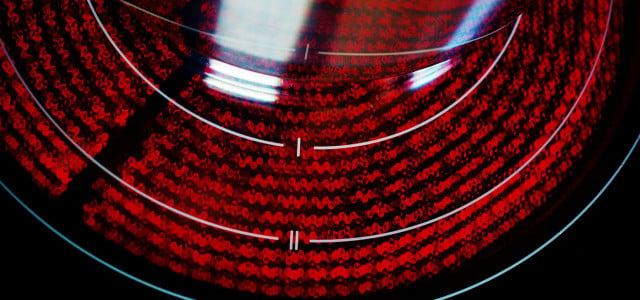Removing scratches on a glass stove top can help you make them look like new. Here are two natural methods to make your glass stove top beautifully sleek and quick to clean again.
Glass, or ceramic stove tops, look sleek and stylish in the kitchen, but their major downside is how quickly and easily they tend to get scratched. In this article, we’ll outline two ways of removing those aesthetically displeasing scratches so they can look like new again.
Where Do Scratches on Glass Stove Tops Come From?
Pots and Pans
Scratches are most often caused by one or more of these factors when it comes to the pans you use:
- Using pans with uneven textures on their bottoms
- Using aluminum cookware, as aluminum leaves streaks across glass stoves tops that can look like scratches
- Sliding pans back and forth over the glass
Cleaning Methods
The way you clean your pans and glass stove top can also play a part in increasing the likelihood of scratches. Things to look out for include:
- Burnt food on the bottom of your pans
- Spills left unaddressed for prolonged periods of time
- Abrasive cleaners or cleaning implements
How to Prevent Scratches on Your Glass Stove Top
A few tips to easily prevent further scratching are to use mainly stainless steel based pans, to only lift them onto and off of the stove, and to clean with a gentle and non-abrasive cleaner after every use.
Which Scratches Can Be Removed From a Glass Stove Top
As mentioned above, some scratches might actually just be aluminum stains left behind by your pans. Try using a bit more elbow grease on these before attempting the following methods, you might save yourself some time and money.
The following methods work to reduce the appearance of visible scratches, which are almost undetectable to the touch and more of an annoyance to the eyes.
Neither of these methods will be able to help you fix cracks or gauges in your stove top. You are always better off consulting a professional if this is your situation, and you should definitely refrain from using your cooktop until the issue is solved.
Method 1 to Remove Scratches: Toothpaste or Baking Soda Paste
This method is most effective for slightly deeper scratches, which may be more prominently felt and seen.
What you need:
- Natural whitening toothpaste (or a baking soda paste made using 2 parts powder, 1 part water)
- Cloth
- Spray bottle with water
- Soap (optional)
- Strong arms and a lot of energy
Method:
- Wipe down the stove top to get any food or grease off of it.
- Wet the cloth with some water.
- Starting with about a quarter sized amount of paste, apply the paste to the damp cloth and work into the scratched areas using a circular motion for several minutes.
- Check the area constantly with your fingertips to gauge your progress.
- Spray down the area and wipe off any excess paste.
- Repeat steps 3-5 with increasingly smaller amounts of paste each time.
- To finish, wash off the toothpaste or baking soda before it dries and wipe the surface down with a clean cloth and water to remove any residue.
You may find that your stove looks a little dulled in the areas where you’ve sanded, this can easily be fixed by buffing up the surface. You can either use your own favorite buffing method, or follow a recipe for one of these homemade glass cleaners.
Pros and Cons:
We recommend using a natural whitening toothpaste for this project, as these toothpastes contain gentle abrasives. All toothpastes typically contain abrasives, however in whitening toothpastes the abrasiveness acts as both a polish and a sandpaper, depending on how much you apply. By starting with larger amounts and working down to a smaller amount, you should notice a greater reduction in the visibility of larger scratches on your glass stove top.
It should also be noted that toothpaste or baking soda paste cannot be used as scratch removers if the scratches are deeper or wider than your fingernail tip.
Method 2: Remove Scratches From a Glass Stove Top With Polish and Buffer
This method is most effective for just visible scratches which aren’t deep enough to really be felt. It can also be used as a follow-up to the above method.
What you need:
- ¼ cup of apple cider vinegar
- ¼ fine powder clay
- Electric drill
- Buffer pad drill attachment
- Old clothes and protective glasses
Method:
- Clean down the stove top with water and dry with a cloth.
- Combine the apple cider vinegar and clay. You can use any fine powder clay, or even dirt from your garden. If you choose to do the latter, make sure to sieve the dirt several times to remove all possible impurities before combining with the cider vinegar.
- Secure the buffer pad to your drill.
- Remove all items from the surrounding area to your stove top. Don your old clothes and some protective glasses if you haven’t already, this method can get a little messy!
- Work the vinegar and clay mix into the area you want to address.
- Start buffing. For a single hob ring, you will probably need to spend at least 5 minutes buffing before seeing results.
- Work the whole stove top in this way until all scratches are gone.
Tip: There are a multitude of ways you can use apple cider vinegar for cleaning, including keeping your glass stove top clean between uses. Making a regular habit of this should help you avoid any future scratches.
Read on:
- How to Clean the Inside of a Windshield Quickly & Easily
- 6 Tips for Repairing Scratches on Wood Floors
- Best Way to Clean Bathtub Without Special Cleaners
Do you like this post?






